October 2015
On what it means to study marine mammals (or the ocean in general)
Adrianne Akmajian, graduate student
16 October 2015
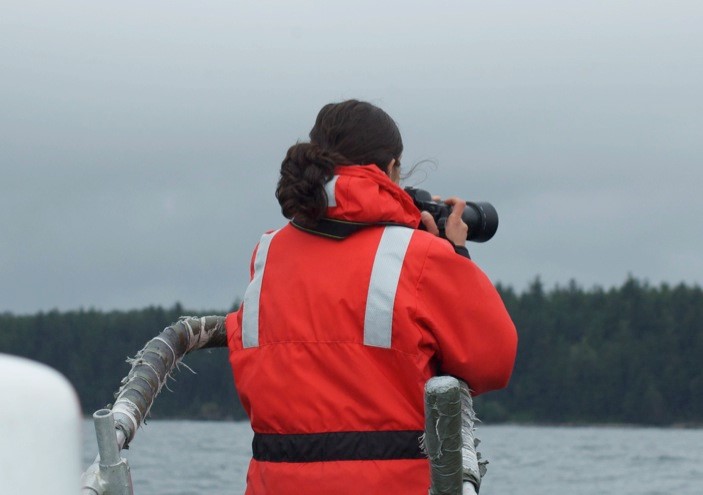
I first got into studying marine mammals somewhat by luck. While finishing my senior year of undergrad, I decided to double major, which meant finishing a few courses over the summer. My marine biology professor suggested that I could use an internship to complete my final needed biology credits. He put me in contact with the Washington Department of Fish and Wildlife and that summer I began what would become a three year long volunteer internship assisting with marine mammal strandings and harbor seal research in the South Puget Sound. Later, this would become the field experience I needed to win a job working on the Washington outer coast helping research sea lions and gray whales and running a marine mammal stranding network.
As with most charismatic megafauna, when I first started this work my focus was purely, at that time, on the seals. While necropsies exposed me to pathogens, parasites, and disease processes, my initial interest and focus was still on the seals themselves. They are just so cute, fat, and round, you know? Although over the years my perspectives have broadened (those diseases sparked quite and interest too), it was perhaps not until conducting my Master’s research that I began to understand what studying marine mammals (or really, most ocean sciences) entails.
In previous blog posts (read here and here), I have briefly described my goals and methods to study harmful algal bloom toxins in sea lion scats and compare the presence of toxins to what prey the sea lions eat. At the outset, I knew this was branching into at least two fields about which I knew little: plankton and fish. Sea lions eat fish. I like to eat fish. Plankton can grow in large blooms and produce a harmful toxin. That toxin can make me sick and makes sea lions sick too. That’s the gist of it, right?
In truth, I am forced become a small expert on more topics than I care to count (of which this is not an exhaustive list):
- Local and large-scale oceanography - these processes affect plankton production and fish populations
- The life history of the plankton and conditions that lead to toxin production
- The life history of many fish species of the West Coast - where do they live, what do they eat, do they migrate, where are they distributed at different times of year?
- The digestion/ingestion of the toxins by the sea lions - how much of the toxins do they excrete in their scat versus actually gets into their systems?
- The digestion/passage rates of the prey - how likely is it that prey bones recovered from the scat actually reflect what prey species had the toxins?
- The pathology of two toxins - how do they affect the sea lions?
It quickly becomes obvious that knowing something about sea lions does not get you very far without putting them in context of the larger ecosystem. Does this mean we all need an exhaustive knowledge on every topic? No. The great thing about working in science is the ability to collaborate and work with scientists in fields other than your own. Collaborations can help make connections between these fields and can lead to a better understanding of the whole system. Do I think my Master’s thesis will have earth-shattering implications or directly impact the sea lion populations on the Washington coast? No, but I hope it will attempt to make these connections and put the sea lions in context of at least this local ecosystem. Over the next several blog posts I will write a few installments to pass on some my learning on the topics above, so that you all can start to become small experts too.
Update from the log pond
Nicholas Wesen, undergraduate student
14 October 2015
Big news at the observation site! The construction project to remove the pollutants in Bellingham Bay is well under way. One of the most recent steps of this process is removing the log booms (see below) on which the harbor seals haul out.
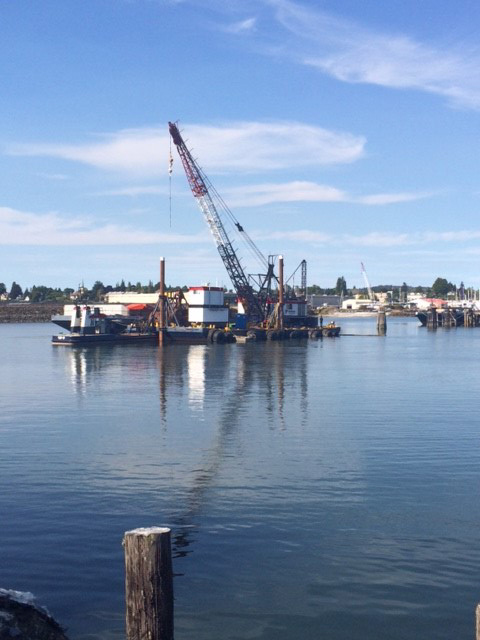
Photo by Raven Benko
The logs were removed for several days and then several of the log booms were relocated to the far side of the observation inlet. We saw a dramatic drop in seal numbers when the logs were first removed (as you might expect). When the logs were relocated some seals did return to haul out at the new location. Note that since the relocation of the log booms, the seals have not returned in as great of numbers or as regularly. It will be very interesting to see how the seals react to this new location over the next couple months! We will keep you updated on how everything is going down by the bay!
Thanks for reading! - Nick Wesen
New school, new year, new helpers, new seals?
Daniel Woodrich, undergraduate student
13 October 2015
With the start of the 2015-2016 school year, I have officially begun my tenure as the manager of the Whatcom Creek seal monitoring project. The project made some big advances last year, as we increased the amount of time at the creek, and caught up on entering and formatting all of the data we’d been collecting over the last several years.
To keep up the high level of observation effort at the creek, Erin Matthews (the previous manager) and I took the initiative to hire more helpers for the project last spring. We welcome Nolan Newman, Raven Benko, Hannah Burley, and Skye Fench to the team!
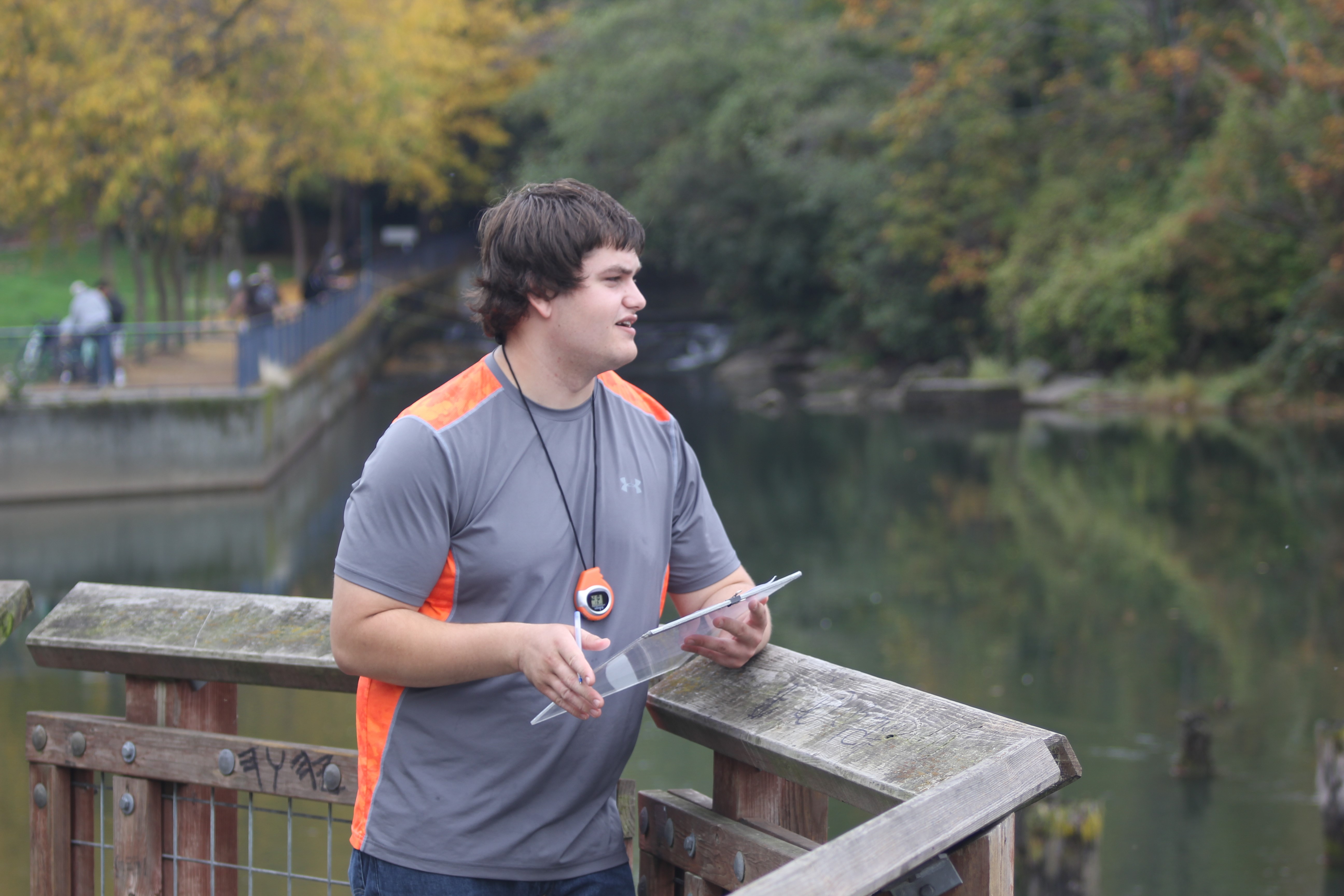
New helper Nolan watches the surface vigilantly. Nolan is a recent transfer to WWU, he is interested in both biology and computer science! Photo: Daniel Woodrich
It is the fall, so the seals are just beginning to return in force to hunt the running salmon. Since hunting is so often observed in the creek, and there has been much greater presence of seals in the fall than in other seasons, we can relate presence in the creek to a hunting response. Since different species of salmon run at different times during the fall, the presence and abundance of seals during each run may suggest which salmon species the seals favor. Understanding the feeding preferences of seals is a big factor in understanding their movement ecology. In other words, it helps us understand what impact food may have in how the seal population moves. Since we use photo identification to identify unique seals, we can also see how the population changes in composition between seasons and the between salmon runs of each species.
Right now, my main challenge has been trying to figure out my duties as a manager, and how to mobilize and keep track of the nine students that are a part of this lab. Dealing with computer/printer/equipment failure, scheduling observation times, supplying datasheets, and keeping the lab members updated are all fair game as the manager of the lab. This summer I had a great chance to work on analyzing data, interpreting it and presenting it: this year I am starting to get a better sense of all the work that goes in to collecting observational data in the field. This project is more than about being a good with numbers and figures, it also demands a high level of commitment, maintenance, and leadership. I am excited to develop these skills, and feel fortunate to have such a great team of assistants, as well as a great source of mentorship from Alejandro and my other WWU professors behind me.
In addition to seals, there is a lot of wonderful wildlife at the creek that helps us enjoy ourselves at the site. Here are some pictures captured in the last week!
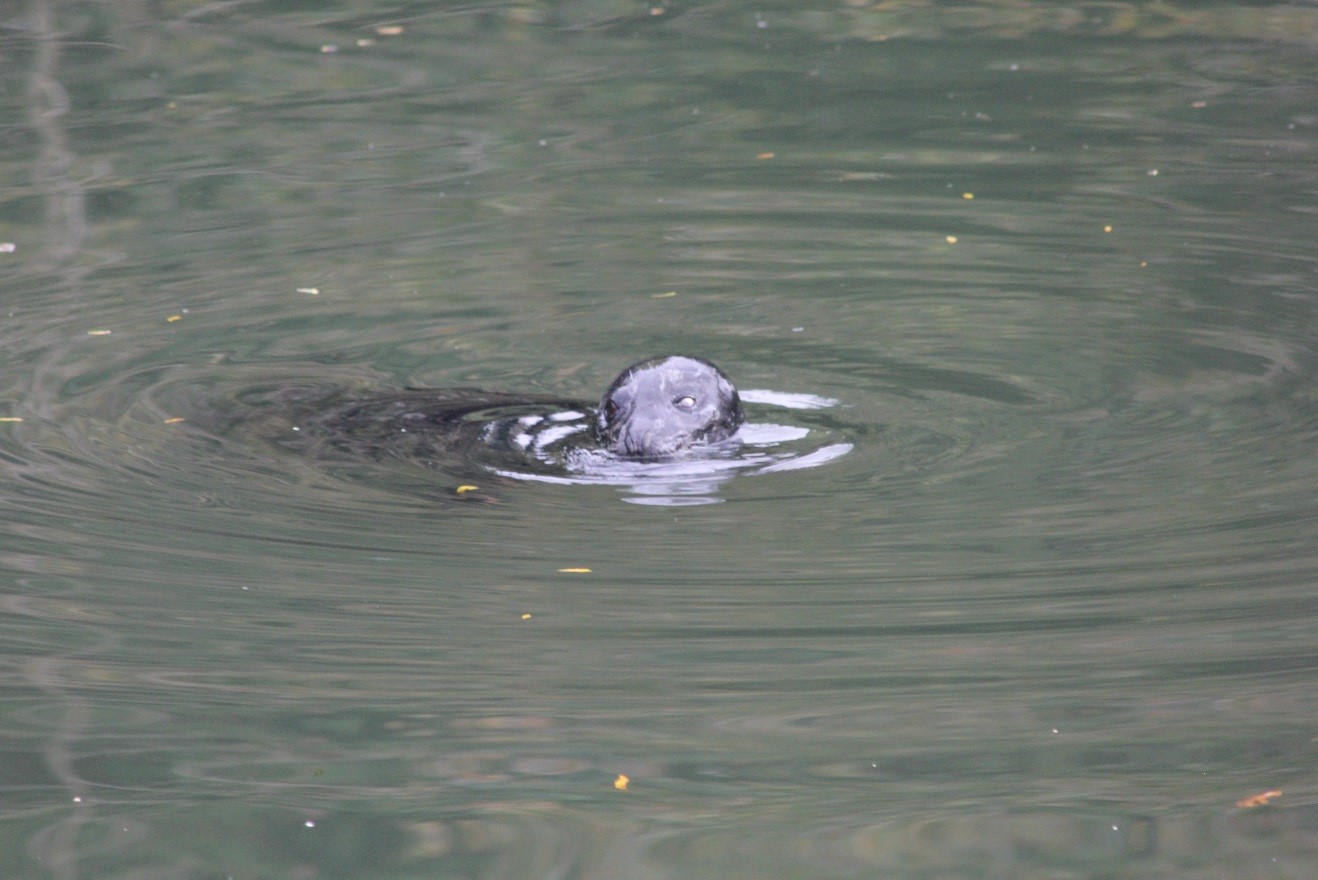
A milky white eye makes this visitor quite distinguishable. Photo: Daniel Woodrich.
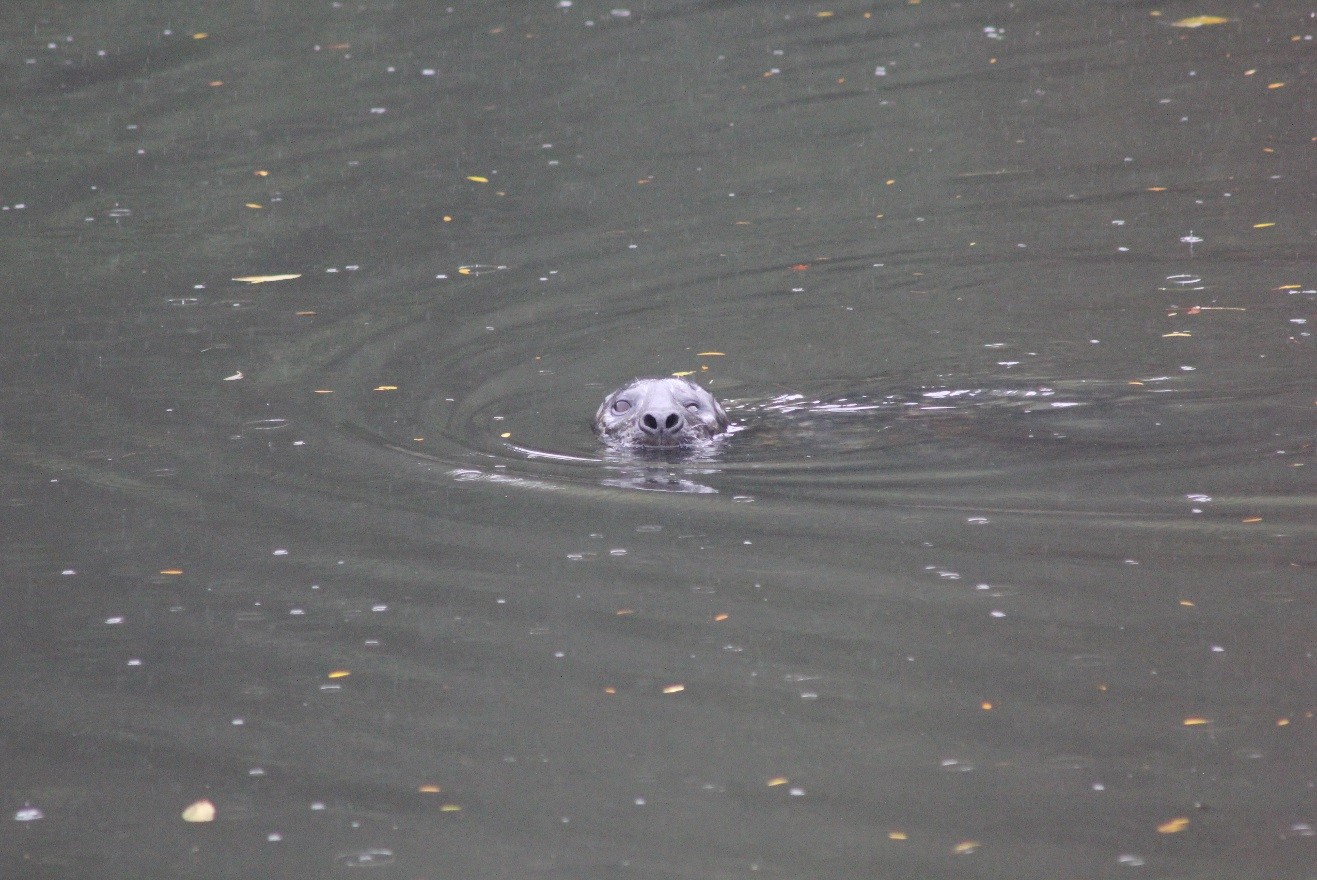
Recognize me? Photo: Daniel Woodrich.
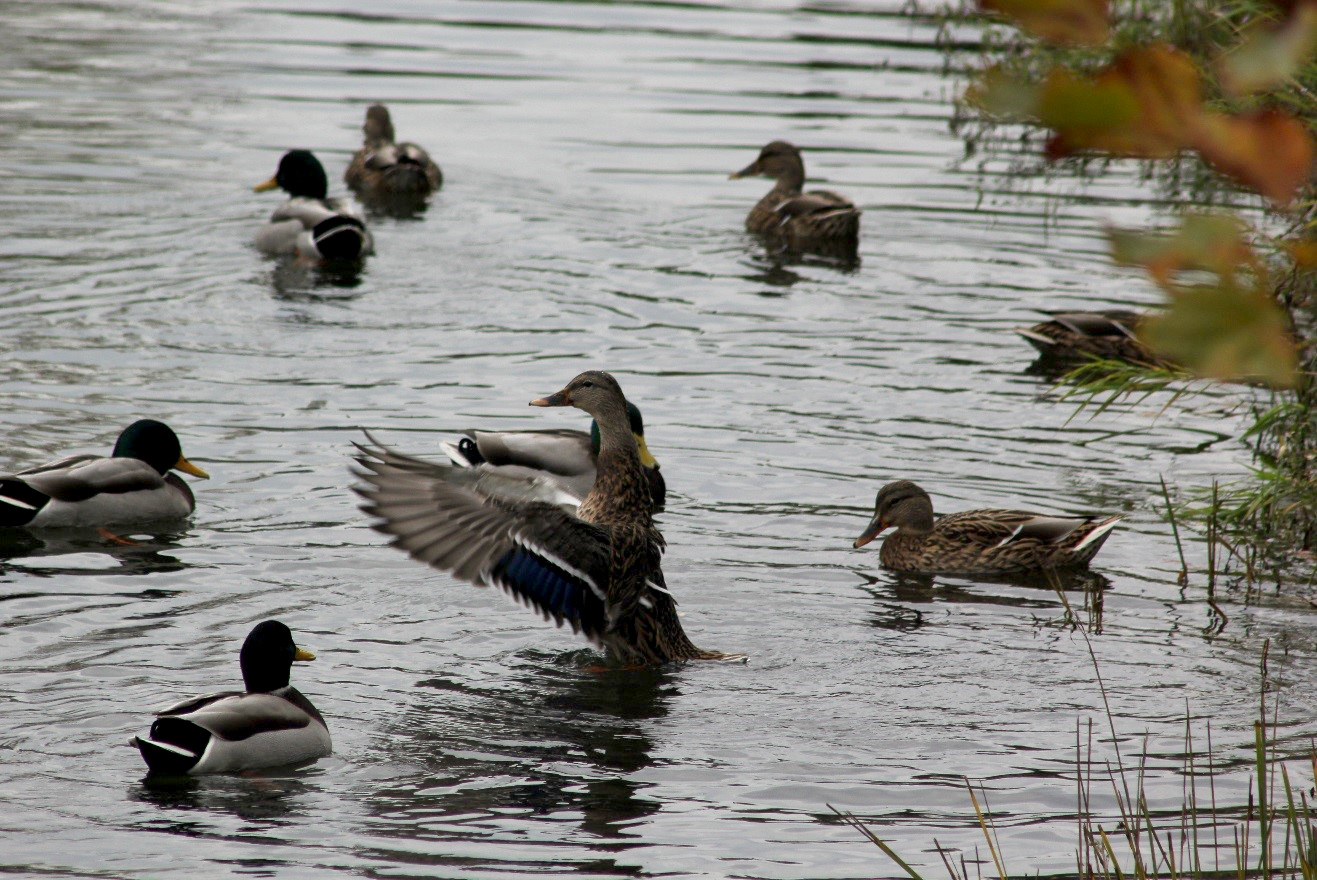
The rare wing-flap shot. This behavior is part of a stereotyped preening process among local ducks, a very timing dependent shot! Photo: Daniel Woodrich.
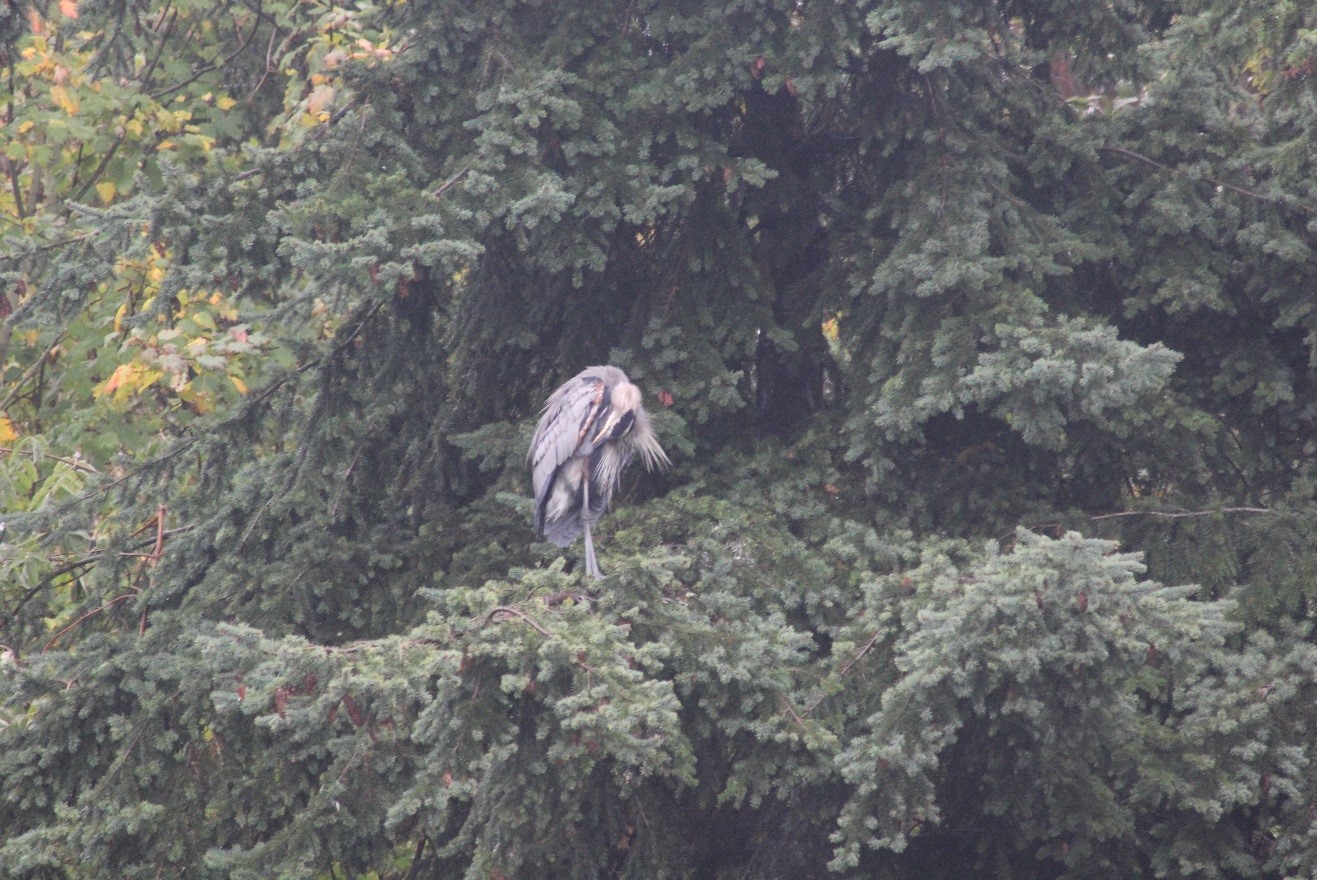
Our resident Great Blue heron. Photo: Daniel Woodrich.